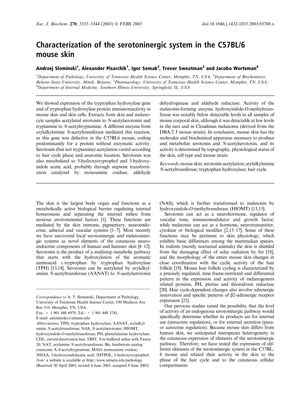Characterization of the Serotoninergic System in the C57BL/6 Mouse Skin
July 2003
in “
European journal of biochemistry
”

TLDR Mouse skin can produce and process serotonin, with variations depending on hair cycle, body location, and mouse strain.
In the study from July 24, 2003, researchers demonstrated that mouse skin, specifically in the C57BL/6 strain, possesses the molecular components to produce and metabolize serotonin and its derivatives. They found that the skin and melanocytes could convert serotonin to N-acetylserotonin and tryptamine to N-acetyltryptamine, although a different enzyme than arylalkylamine N-acetyltransferase was responsible for this reaction due to a gene defect in these mice. The acetylation of serotonin, but not tryptamine, was shown to vary with the hair cycle phase and location on the body. Additionally, serotonin was metabolized into other compounds through a series of reactions involving monoamine oxidase, aldehyde dehydrogenase, and aldehyde reductase. However, the enzyme responsible for converting N-acetylserotonin to melatonin was present at very low levels or undetectable in most skin samples, except for the ears and a specific melanoma cell line. The study concluded that the activity of these serotonin-related processes in mouse skin is influenced by factors such as the skin's physiological status, the type of skin cells, and the strain of the mouse.




